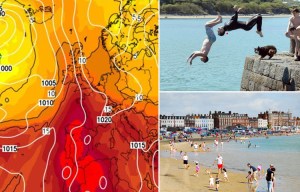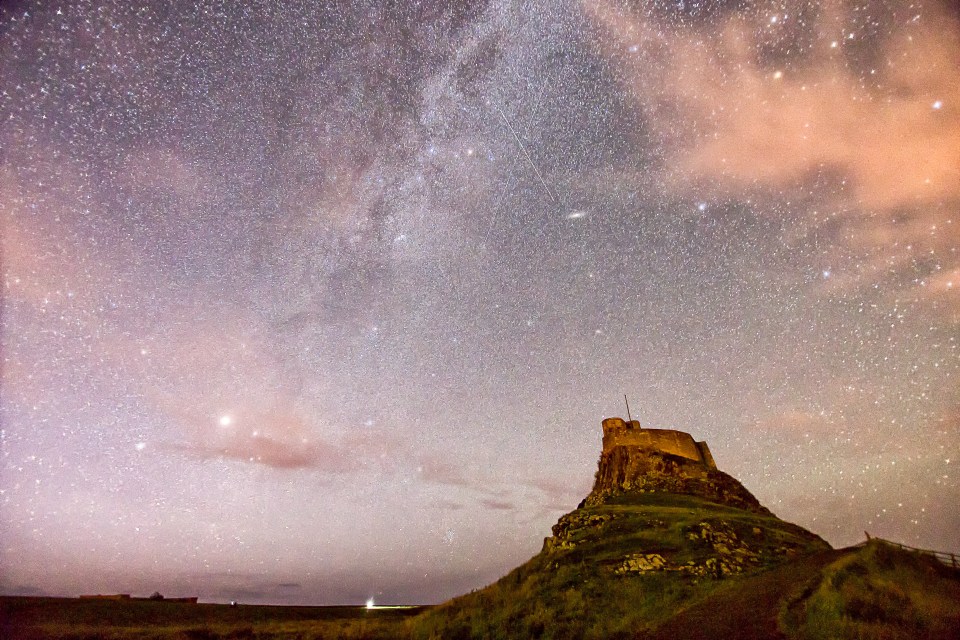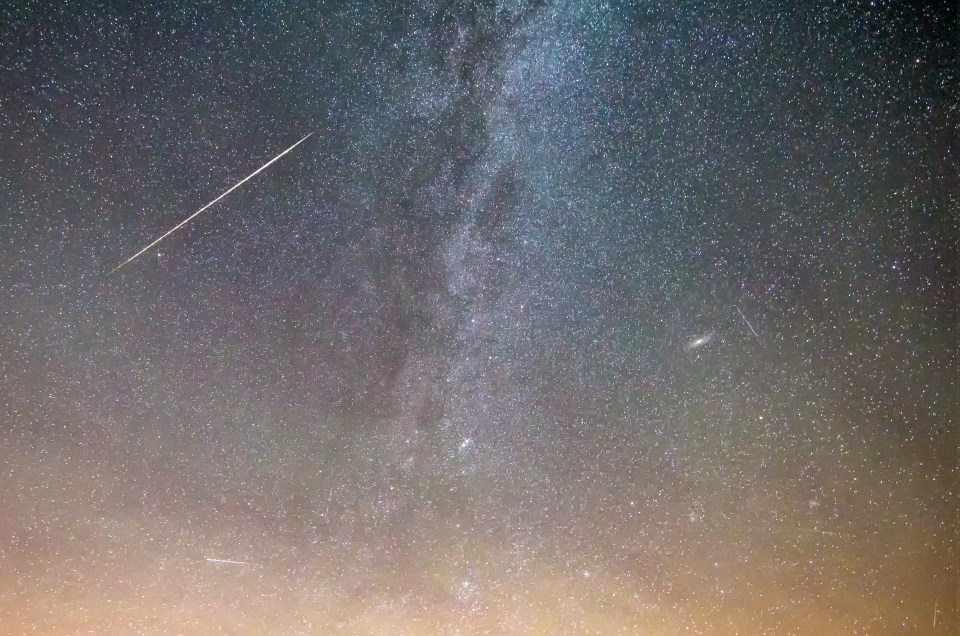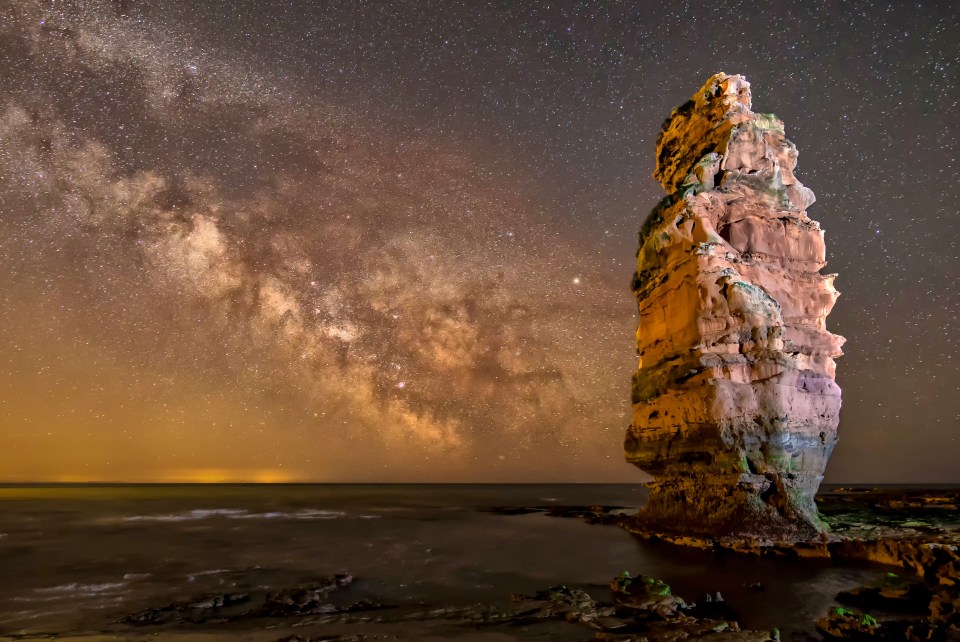Perseid meteor shower reaches a 12-year peak tonight with up to 300 shooting stars an hour – and here’s how you can catch it
One of nature's most spectacular displays will light up the skies over Britain tonight

A SHOOTING star lights up the night sky as the Perseid meteor shower, one of nature's most spectacular displays, reaches a 12-year peak in the skies above Britain tonight.
Last night skygazers were treated to a brilliant show up and down the country, and by tonight Brits have the chance to spot as many as 300 shooting stars an hour.
The Perseid meteor shower happens every July and August as the earth crashes through ancient debris from a comet-tail.
Astronomers say this year's light show will be the best for 12 years with up to twice as many meteor strikes as usual, which will be visible tonight from everywhere in the UK if the weather is kind.
The peak is expected on in the early hours of Friday when at least 100 meteors every hour will streak across the heavens.
In darker areas as many as 300 - five every minute - could be visible, says astronomer Mark Bailey of the Armagh Observatory in Northern Ireland.
He said: "This outburst, as we call it, doesn't last that long. It might last an hour or a couple of hours.
"Some years are better than others, and then there are exceptional years like this year."
RELATED STORIES
Last night photographers captured shooting stars over Holy Island, Northumberland, a farm in County Durham and on the Devon coast.
The Perseids happen once a year as the earth passes through a wide cloud of debris left behind by Comet Swift-Tuttle on its elongated 133-year orbit round the sun.
Each meteor is a piece of broken-off comet, some as small as a grain of sand. They explode in a streak of light as they slam into the earth's atmosphere at 132,000 miles an hour.
Within the broad belt of debris there are also denser dust ribbons created when the comet passes closest to the Sun in its orbit - a juncture called perihelion.
This year, the earth is on a collision course with three of the most heavily populated of these trails, created in the years 1862, 1737 and 1479.
NASA meteoroid expert Bill Cooke said: "The meteors you'll see this year are from comet flybys that occurred hundreds if not thousands of years ago.
"And they've travelled billions of miles before their kamikaze run into Earth's atmosphere."
Experts said there is no risk to our planet as the particles burn up before reaching the surface.
In fact, astronomers' main concern is the weather, with cloud cover predicted for parts of Europe.
The best time to view will be after the moon sets at around 12.20am tonight.
Experts say you should get as far away from clouds and electric light as possible to enjoy the show.
No telescope or special equipment is needed - all you have to do look towards the Milky Way and wait.
Mr Bailey said: "Wrap up warm, be prepared to sit comfortably on a deck chair or whatever, a glass of wine in your hand maybe, and then allow time for your eyes to become accustomed to the dark." That can take as long as 20 minutes, he said.
Robin Scagell, vice-president of the Society for Popular Astronomy, said: "Usually the Perseids are fairly dependable. There might be some long gaps and then you'll see two or three at once.
"They're fairly swift and dash across the sky quite quickly leaving trains behind them."
The next mega-outburst of the Perseids is predicted to occur on August 12, 2028, and will feature the dust trail produced by the comet during its 1479 perihelion passage.
The yearly show got its name because the stars appear to fly out of the constellation Perseus, visible in the Northern Hemisphere.
The best times to see them are during the hours of darkness between Thursday and Saturday, said Mr Scagell.
They appear to emerge from a "radiant" point in the vicinity of the constellation Perseus in the north east but it is best to look away from that direction or they will vanish overhead too fast.
















